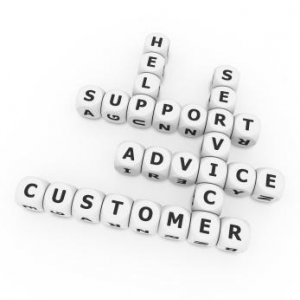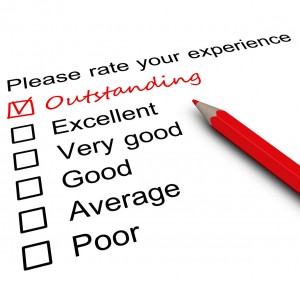We all are well aware of a simple fact in marketing – Acquiring new customers is five times more difficult and expensive than retaining existing ones. We also understand that customer satisfaction and loyalty are inseparable from the well-being and long term growth of the company. In other words, the success of our businesses depends on how satisfied and loyal our customers are. Very simply put, loyal customers are essential to the vitality of our business.
Unhappy customers equal lost profits. That is why customer surveys are vital to good business. By gathering feedback from customers, we can identify and fix problems before they decide to take their business elsewhere. Evaluating customer satisfaction is one benefit from conducting a survey. With more in-depth questions, you can also gauge interest for new products and services and pinpoint areas for improvement.
An effective customer satisfaction survey program should focus on measuring customer perceptions of how well the company delivers on the critical success factors and dimensions of the business. These usually include factors like service promptness, staff responsiveness, and understanding of the customer’s needs, concerns and problem.
Most traditional “Customer Satisfaction Surveys” tend to be long, cumbersome and demand a lot of time and attention from your customers. As you can imagine this leads to a very low response rate for customer satisfaction surveys. For example, customers who are unhappy are not likely to go through a long customer satisfaction survey.
The other problem with traditional satisfaction surveys is that they are very difficult to analyze and produce results that are hard to decipher. On the other hand, if your customers get a short survey, the response rate will be much higher. The higher response rate will give you a more accurate evaluation of the customer’s perception of your company.
Consider what Frederick F. Reichheld wrote in a Harvard Business Review Article: “The path to sustainable, profitable growth begins with creating more promoters and fewer detractors and make the net-promoter number transparent throughout your organization. This number is the one number you need to grow. It is that simple and that profound.”
How do you effectively gauge customer satisfaction and loyalty? It is not as difficult as you may think. Amazingly, asking a single question can give you the information you’re looking for: “How likely is it that you will recommend [Your Company] to a friend?”
Have customers rate their answer on a 0-10 Scale. You can then classify their responses into three different categories:
- 9-10 These are your most cherished evangelists – they are very satisfied and will recommend your company any chance they get.
- 7-8 These are satisfied customers but passive when it comes to spreading the good word about your business.
- 0-6 They are the – fairly unsatisfied with you – most likely to leave you for your competitor.
 If you have 60-70% of your customer base with a score between 9-10, congratulations, you have a powerful customer’s sales force working for you. They are happy with your product offering and are willing to put their reputation on the line for you by recommending your product or service. If the results are lower than expected you know there is room for improvement. In that case take advantage of this opportunity and ask more in depth questions. You may want to add more questions to your survey. For example, “List one thing we did right” and “What is one thing you would change?”
If you have 60-70% of your customer base with a score between 9-10, congratulations, you have a powerful customer’s sales force working for you. They are happy with your product offering and are willing to put their reputation on the line for you by recommending your product or service. If the results are lower than expected you know there is room for improvement. In that case take advantage of this opportunity and ask more in depth questions. You may want to add more questions to your survey. For example, “List one thing we did right” and “What is one thing you would change?”
More Tips for Creating a Survey
Type your survey on self-addressed, stamped postcards. Include a card with every finished frame and invite customers to send them in.
Email surveys to your clients. There are many online companies like Questionpro.com that can build your survey, send invitations to your customers by email and provide you with instant customer satisfaction reports.
Keep it simple. An effective survey should focus on three important points; tell us how we’re doing, what we should be doing better, and if we’re good enough to tell a friend.







NO COMMENT